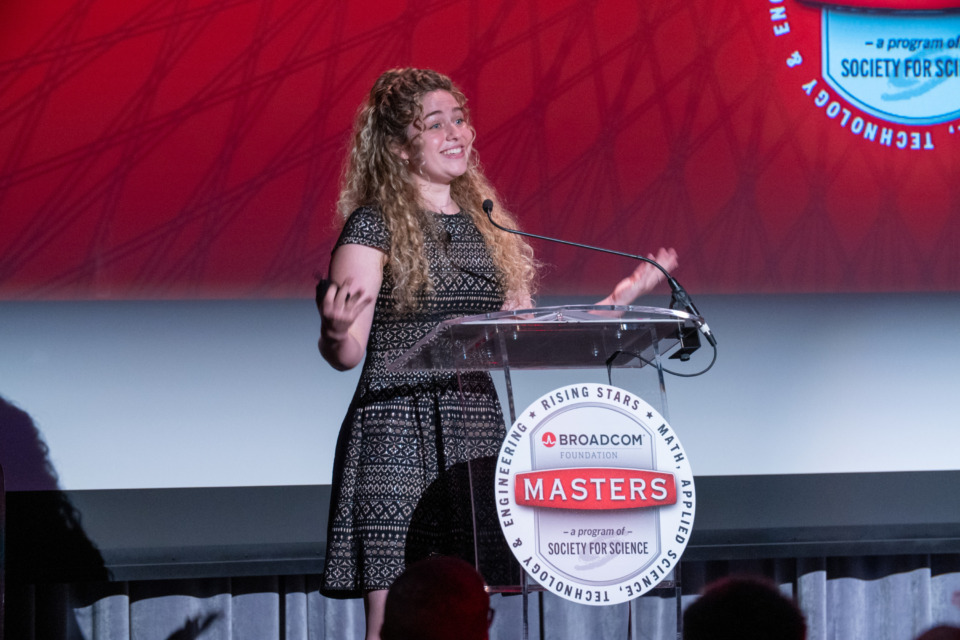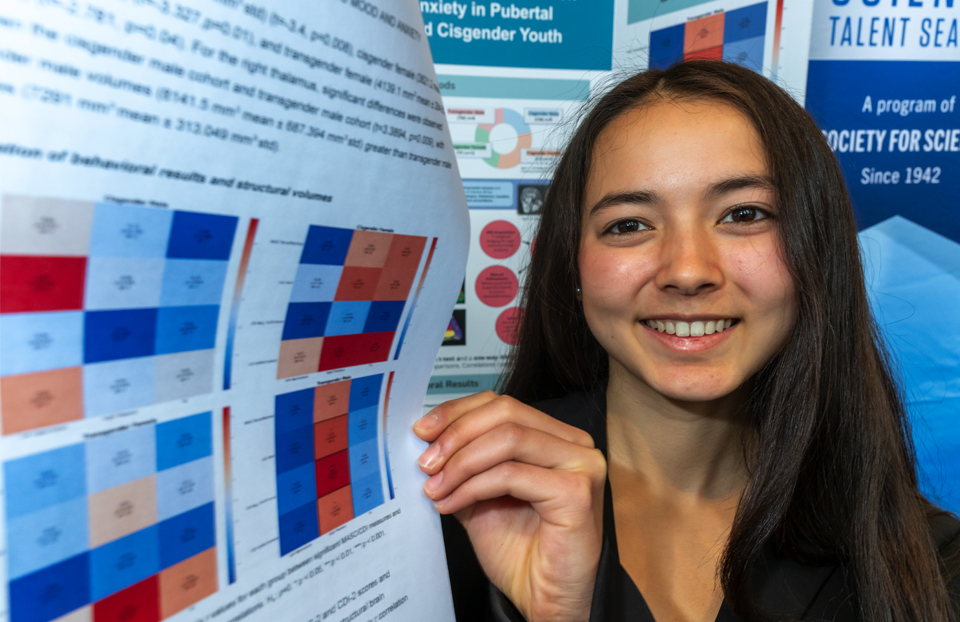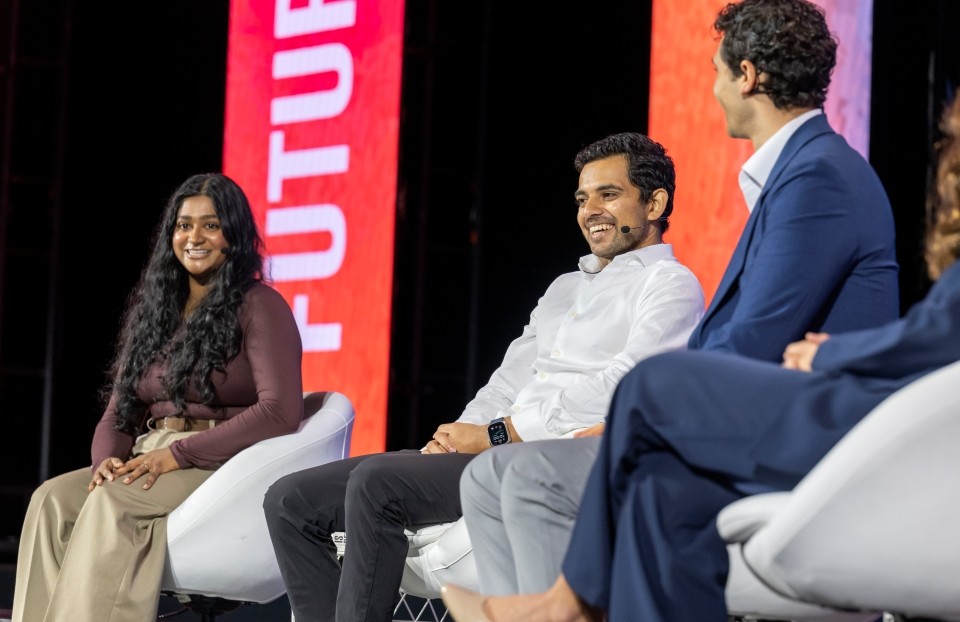Five questions with Christine Ye, the 1st place winner of the 2022 Regeneron Science Talent Search
We recently had a chance to catch up with Christine Ye, the 1st place winner of this year’s Regeneron STS! This past fall, the Sammamish, Washington native moved a bit south from her hometown to attend Stanford University in Palo Alto, California.
Currently, Christine says she plans to major in physics with a concentration in astrophysics. Outside of these subject areas, she has taken an array of classes on topics from special relativity and galaxy evolution to surfing and fashion design. Christine has also joined several other activities outside of school. For instance, she is a member of the Stanford Astronomical Society and is hoping to get involved in an experimental physics research lab next quarter. She is also involved in entrepreneurship, science outreach and data science and says she is more “broadly interested in applying technical research skills to new, interesting problems.”
Recently one of her research papers was published in the high-impact publication Astrophysical Journal, on which she is the first author. Christine is also currently working on a project using simulations to see how stars evolve to better understand the physics behind the black holes and neutron stars LIGO sees colliding.
The Stanford freshman says that coming in first place in STS 2022 meant a lot to her. “I am so grateful to have been the 2022 STS 1st place winner! Being a finalist was already such an incredible experience, and I’ll always cherish the amazing memories from Finals Week. I’m extremely thankful for the amazing scholarship, which alleviates the massive financial burden of attending college, but more importantly, being a finalist and a top winner gives me confidence that people truly believe in me and my research, and that I have this wonderful community supporting me. It helps me believe that all the work I put in has paid off and that I can make real scientific contributions that can make a difference. Wherever my career takes me, I’ll always remember how STS gave me faith that I could do it.”
Let’s hear more from Christine below.
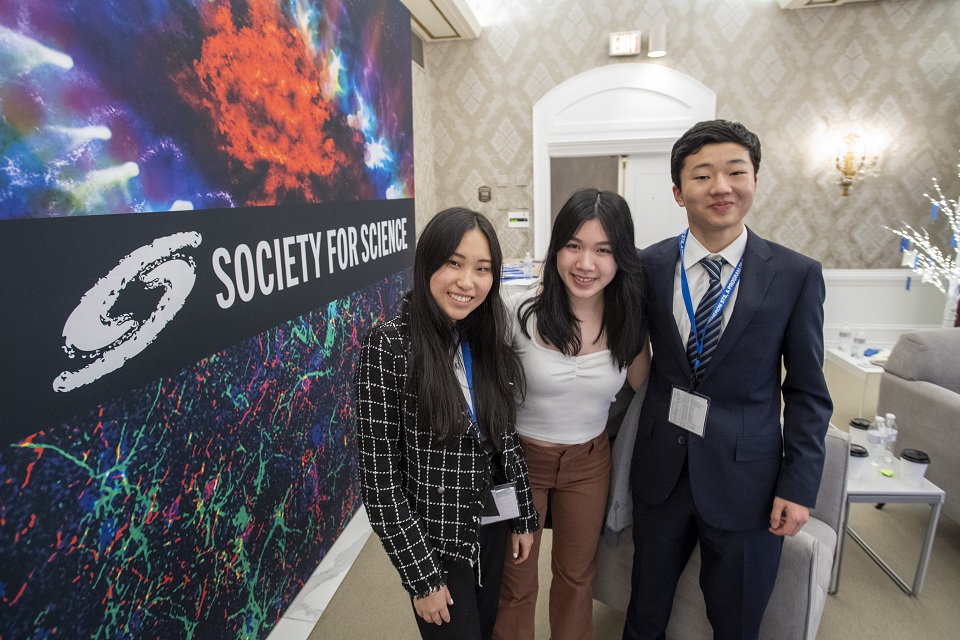
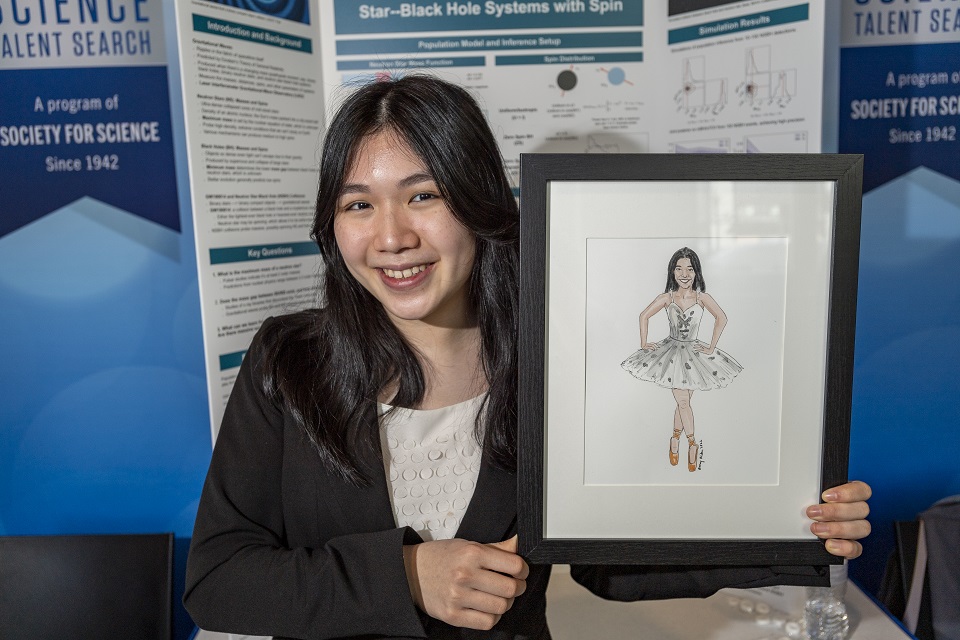
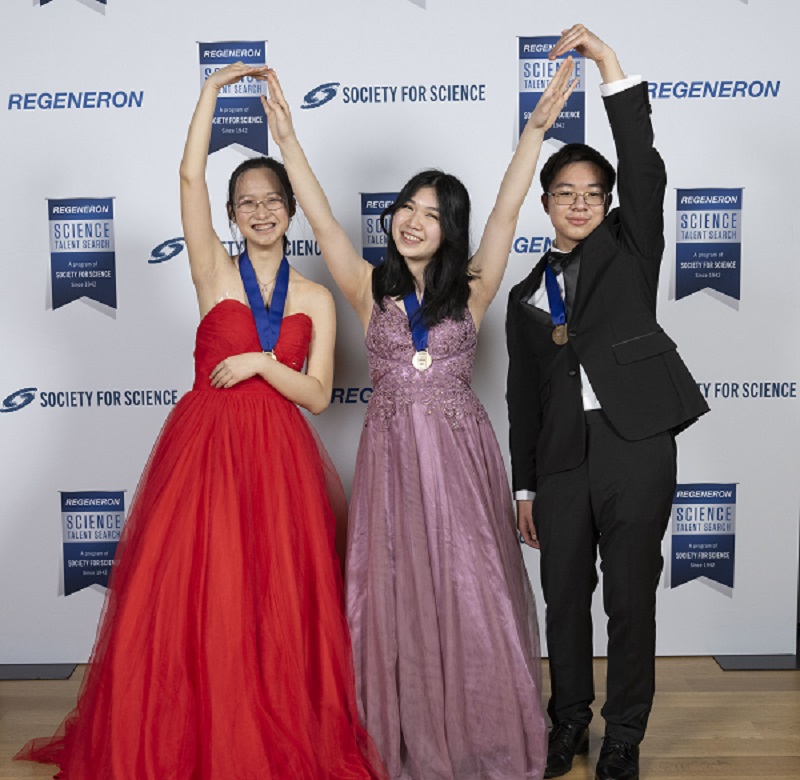
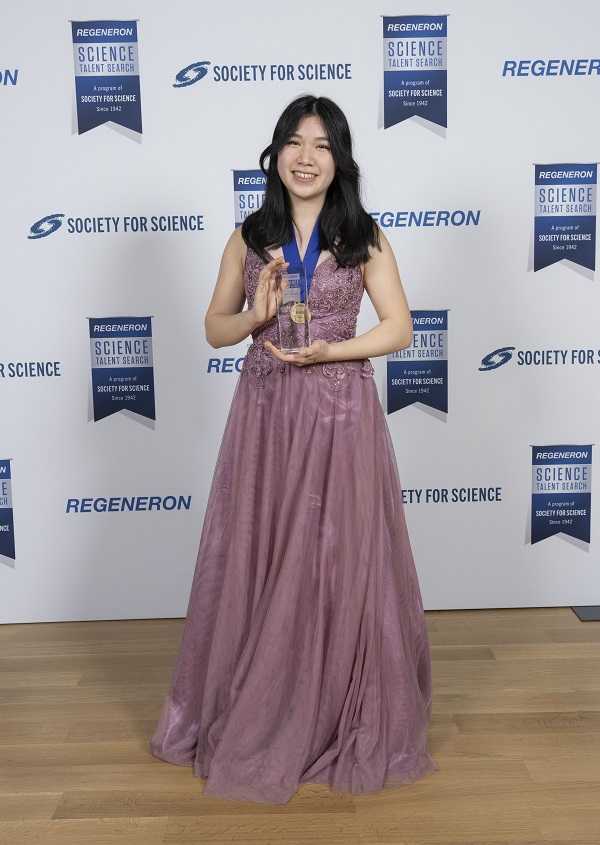
What about your experience at STS surprised you the most?
What I was most surprised by was how welcoming, friendly and tight-knit the STS community became during Finals Week and beyond. From the spontaneous dance break sessions between judging interviews to late nights in the lounge, I got to learn about the lives, backgrounds, dreams, perspectives and scientific research of 39 incredible young people. Whether it was Daniel Larsen’s official New York Times crossword or Amara’s family honeybee farm, every finalist had such fascinating stories to share. I even met up with some of the finalists this past summer in Florida and have been seeing finalists (including from previous years) regularly here at Stanford. Genuinely, I can’t emphasize enough how much joy and learning being part of the STS family has brought me!
What was your most memorable experience from STS this year?
My favorite memory was the Scavenger Hunt on the National Mall! Washington, D.C. is such an incredible location for Finals Week. It was wonderful to get to see landmarks like the Smithsonian Institution and Washington Monument and to spend time just doing silly challenges with friends.
Which scientist – alive or deceased – would you want to solve scientific mysteries and why?
I’d love to work with Kip Thorne! Thorne received the 2017 Nobel Prize in Physics for his pioneering work in building the Laser Interferometer Gravitational-Wave Observatory (LIGO), which was the focus of my STS project. Funnily enough, Thorne himself was in the 1958 STS class, back when it was the Westinghouse Science Talent Search! I truly admire Thorne’s combination of brilliance and range. From the engineering physics behind LIGO’s experimental design to the theoretical intricacies of black hole and wormhole spacetime to the scientific direction of Christopher Nolan’s Interstellar, Thorne has made incredible advancements across physics while always giving back to the general public. Moreover, I’m continually amazed by how Thorne and other early collaborators in LIGO were willing to take such a big scientific gamble on gravitational waves and maintain their conviction even when most of the broader physics community doubted them. That kind of curiosity, creativity and open-mindedness would make doing science with him incredibly rewarding.
What would you like to be renowned for?
I’d like to be renowned for using a creative, interdisciplinary and technical approach to making a difference in humanity’s knowledge. I was drawn to astrophysics because it allowed me to apply challenging techniques like statistical inference and machine learning to grand and beautiful questions about the universe — black holes, stellar explosions, the Big Bang and so on. Yet it also allowed me to think creatively about the potential intersections between disparate fields of study — how can we understand astrophysics with artificial intelligence, astrophysics with art, astrophysics with human history? No matter where I end up, I’ll keep chasing the multi-faceted thrill of solving hard problems, and hopefully help crack open our universe’s mysteries.
What would you say to inspire the next generation of scientists?
Just give things a try! If there’s anything I’ve learned through my scientific research, it’s that you can’t expect anything to go according to plan. But those moments of aimlessness are often where one experiences the beauty of discovery. Being open-minded and willing to ask interesting questions can take you a long way in science, even if you don’t necessarily have the most expertise or experience in a given field. So don’t overthink things and don’t expect to have everything planned out — just go build that prototype, explore that dataset, test out that experiment and proceed from there!
The Regeneron Science Talent Search 2023 application is now open to high school seniors. Apply by Wednesday, November 9 in order for a chance to win a top prize of $250,000: https://sciencetalentsearch.smapply.org/
